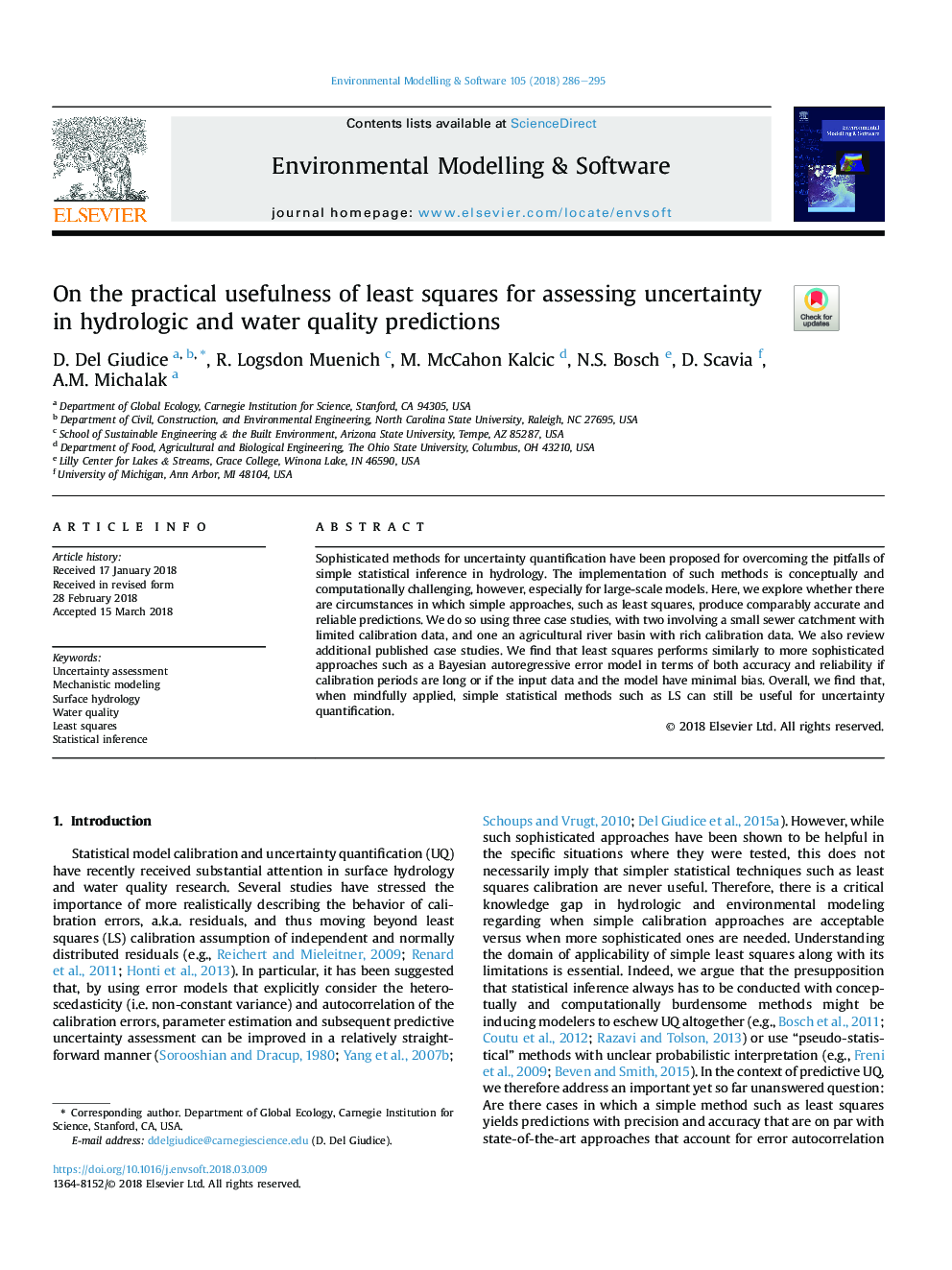| Article ID | Journal | Published Year | Pages | File Type |
|---|---|---|---|---|
| 6962050 | Environmental Modelling & Software | 2018 | 10 Pages |
Abstract
Sophisticated methods for uncertainty quantification have been proposed for overcoming the pitfalls of simple statistical inference in hydrology. The implementation of such methods is conceptually and computationally challenging, however, especially for large-scale models. Here, we explore whether there are circumstances in which simple approaches, such as least squares, produce comparably accurate and reliable predictions. We do so using three case studies, with two involving a small sewer catchment with limited calibration data, and one an agricultural river basin with rich calibration data. We also review additional published case studies. We find that least squares performs similarly to more sophisticated approaches such as a Bayesian autoregressive error model in terms of both accuracy and reliability if calibration periods are long or if the input data and the model have minimal bias. Overall, we find that, when mindfully applied, simple statistical methods such as least squares can still be useful for uncertainty quantification.
Keywords
Related Topics
Physical Sciences and Engineering
Computer Science
Software
Authors
D. Del Giudice, R.L. Muenich, M.M. Kalcic, N.S. Bosch, D. Scavia, A.M. Michalak,
